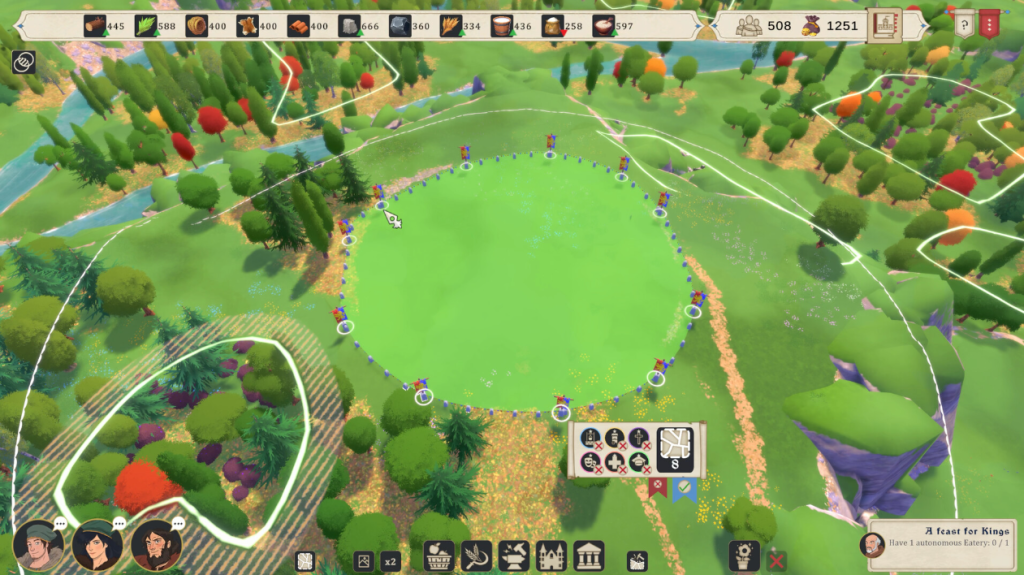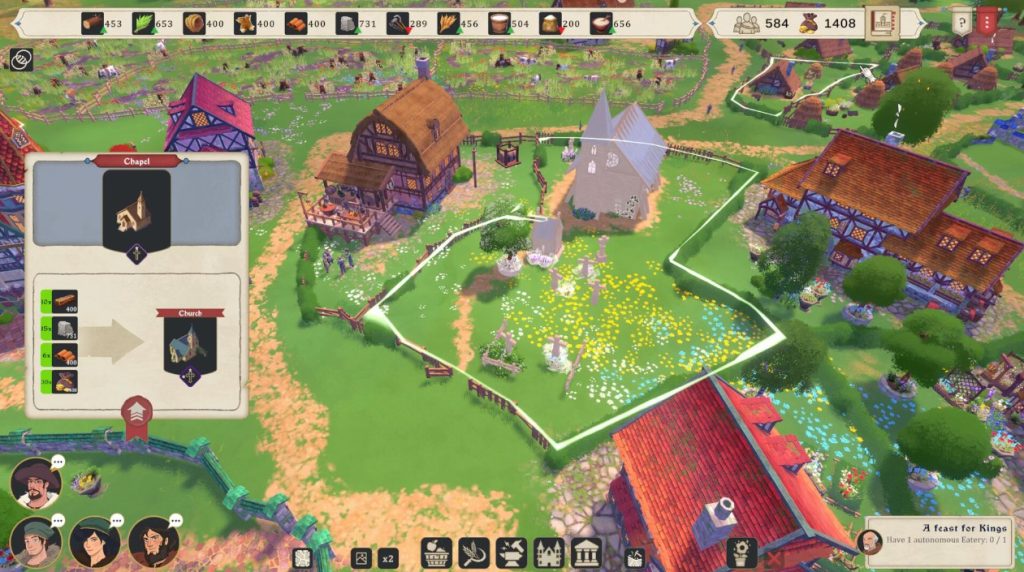There’s something magical about the idea of building a world from the ground up, watching a simple camp blossom into a thriving medieval city. City Tales – Medieval Era invites players to step into the shoes of a benevolent ruler, guiding their people through the trials and triumphs of kingdom-building. As someone who enjoys both the creativity of city builders and the storytelling potential of games like this, I was eager to see how City Tales would distinguish itself in a crowded genre.

Building a Realm from the Ground Up
From the moment you begin, City Tales – Medieval Era immerses you in a lush, hand-painted world. The game offers a choice of two beautiful starting locations, each with its own unique terrain and challenges. Unlike many city builders that rely on rigid grids, City Tales encourages you to let your city grow organically. You lay the groundwork, but your villagers’ footsteps and routines shape the roads and districts. It’s a joy to watch pathways wind and twist as your people go about their daily lives, creating a city that feels alive and ever-changing.
The game’s approach to city planning is refreshingly flexible. Instead of micromanaging every tile, you focus on broader districts and let the needs of your citizens guide development. Some villagers flock to the tavern for merriment, while others seek solace in the quiet of the church. Each district evolves based on your choices and the desires of its residents, making every playthrough feel unique. The sense of agency is strong each decision you make, from where to place a market to how to expand your farmlands, leaves a lasting impact on your kingdom.
Companions, Economy, and the Art of Leadership
Leadership in City Tales is about more than just building structures. You’re joined by a cast of nine companions, each with their own personalities, problems, and missions. These advisors bring both practical benefits and narrative depth to your city. Placing them in charge of key production areas unlocks bonuses and helps them grow into their roles, eventually training new helpers to take their place. Their fates are intertwined with yours, and helping them overcome challenges adds a layer of emotional investment to the game.
Managing your city’s economy is swift and strategic. Balancing resources and citizens’ needs is essential for prosperity, but the game’s pace is relaxed, allowing you to enjoy the unfolding story without feeling rushed. The challenge comes from the natural evolution of your city new problems and opportunities arise as your settlement grows, keeping you engaged without overwhelming you. The sense of progress is tangible, and the rewards for wise decisions are both practical and satisfying.

Customization, Atmosphere, and the Joy of Discovery
One of the highlights of City Tales – Medieval Era is the ability to beautify your city with a variety of decorations. Whether you prefer a bustling market square or a serene garden, the game gives you the tools to make your city truly your own. The hand-painted visuals are warm and inviting, with every stone and timber radiating charm. The gentle atmosphere and vibrant palette make the world feel welcoming and full of wonder.
The game’s narrative is open-ended, giving you the freedom to pursue your own goals. Whether you focus on optimizing production chains, helping your companions grow, or simply enjoying the process of building, your decisions shape the story. There are no wrong choices every path leads to a unique tale. This sense of freedom is both liberating and inspiring, encouraging you to experiment and see where your imagination takes you.
Personal Experience and Critical Reflection
As someone who loves city builders but often feels bogged down by rigid mechanics, I found City Tales – Medieval Era to be a breath of fresh air. The organic growth of the city is genuinely fascinating watching villagers carve out their own paths and seeing districts evolve naturally is a delight. The bright, hand-painted visuals are a standout feature, infusing the game with charm and personality.
However, the game’s onboarding process could use improvement. The tutorial feels mandatory, and there’s no option to skip it, which can be frustrating for experienced players. More importantly, the game doesn’t explain certain mechanics well. For example, it’s never clear why you suddenly gain a larger construction area or why new companions appear out of nowhere. This lack of clarity can make the early game confusing and detract from the overall experience.
I also wish there was more control over editing buildings. There were moments when I had to reload and rebuild structures like the castle because they were facing the wrong way. A happiness meter for the city would also be a welcome addition. As it stands, knocking down a district or house only costs resources, with no apparent impact on your citizens’ morale or loyalty.
Despite these shortcomings, City Tales – Medieval Era succeeds in offering a relaxing, visually stunning city-building experience. The way the game lets villagers shape the roads and districts is innovative and engaging. Unlike many city builders that rely on strict tile-based mechanics, City Tales gives you more freedom to create districts that feel organic and alive.
Final Thoughts: A Charming, if Imperfect, Medieval Sim
City Tales – Medieval Era is a beautiful, imaginative city builder that stands out for its organic growth, charming visuals, and narrative depth. The game’s flexible approach to city planning and the inclusion of companions with their own stories add layers of engagement rarely seen in the genre. While the lack of clear explanations and limited building controls can be frustrating, the overall experience is rewarding and relaxing. For players who enjoy creative freedom and a gentle pace, City Tales – Medieval Era is a delightful journey into the heart of medieval kingdom-building.